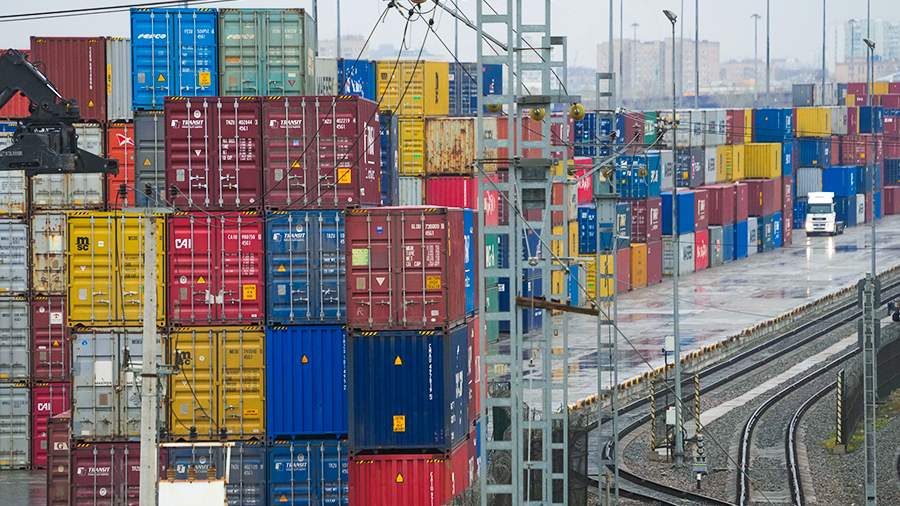
Chinese container transit through Russia approaches pre-crisis levels
By Rhod Mackenzie
The transportation of containers from China to the EU via rail, which passes through Russian territory which was disrupted due to the hostilities in Ukraine, is now being restored. In the first quarter, the amount transported grew by 44% to 90 thousand TEU, which is almost the same as pre-crisis levels. Market participants have confirmed this growth in transit. European recipients are drawn to this route due to its relatively short transit times. In maritime traffic, transit times have increased since container lines departed from the Red Sea due to attacks by the Houthis. The political situation does not affect transit through the Russian Federation due to the largely non-sanctioned nature of the cargo.
In the first quarter, container transit between China and Europe via Russia increased by 44%, according to Deputy General Director of Russian Railways OJSC Alexey Shilo. He stated, 'We transported almost 90 thousand TEU.' Shilo acknowledged that recent events in the Red Sea may cause clients to once again consider the trans-Russian corridor. Simultaneously, the corridor has been established for a considerable period and is technologically advanced. The delivery of goods from the borders of China to the EU borders takes only 5-7 days, which is 3-5 times faster than previous transportation methods. Mr. Shiloh stated that freight rates were relatively low. Therefore, goods that did not require high speed were sent by sea. However, for urgent goods, the land route remained the most attractive.
In the first quarter of 2021, Russian Railways transported 105.8 thousand TEU in transit from China to Europe, which is only slightly less than before the crisis. According to the FT, requests for rail transit through the Russian Federation increased by 40% after the Houthi attacks in the Red Sea, this was reported by market participants.
Mr. Shilo clarified that although the volume of traffic along the transit corridor has not significantly decreased, the structure has changed. Specifically, the lost volume of purely transit traffic has been replaced by goods from Belarus and Russia to China.
One of the trends this year was the increase in transit between Belarus and China. According to Alexey Shilo, "It also grew by 68% compared to the same period last year, and we transported approximately 135 thousand TEU."
Shilo also noted that they are now delivering more cargo from more friendly countries, whereas previously they transported a significant amount from the EU to China.
UTLC ERA, which operates China-EU container transit through Russia, Kazakhstan, and Belarus and is owned by the railway administrations of these three countries, reported that by the end of 2023, the total volume of transportation in the company's services amounted to 674,000 TEU. The China-Russia route saw an increase of 26.6%, with 197.7 thousand TEU transported, while China-Belarus saw an increase of 323%, with 58.5 thousand TEU transported. In 2023, 206.6 thousand TEU were transported from Russia and Belarus towards the east, representing a 107% increase. Imports accounted for 38% of the total, while transit and exports each accounted for 31%. According to preliminary data for the first quarter of this year, UTLC ERA transported a total of 176 thousand TEU, with transit accounting for 50%.
Market participants confirm this trend. According to information from Chinese colleagues, ModernWay CEO Nikolai Olshansky reports that transit traffic in the China-Europe direction has grown by 20-30% compared to 2023. However, the volume of transportation has fallen relative to peak values in January due to an acute crisis in the Red Sea. According to Dmitry Sukhoversha, head of multimodal transportation at FM Logistic in Russia, container deliveries by rail from China to the EU through the Russian Federation have resumed this year. The reasons for the renewed demand from European cargo recipients are unclear, but it is likely due to economic factors and the advantages of this route compared to alternative deep sea services, taking into account the situation in the Red Sea. Changes in the routes of ocean-going vessels around the Cape of Good Hope have resulted in longer transit times, increased operating costs, higher freight rates, and disrupted voyage schedules on one of the primary trade routes between Asia and Europe. According to Fedor Tokarev, national manager for intermodal transportation at Noytech Supply Chain Solutions, the average increase in transit time is 10-14 days, depending on the base port of disembarkation. “This has led to the need to search for alternative routes, and transit via Russian railways appears to be the most optimal solution.”
Some market participants believe that the Red Sea factor is not significant in the growth of interest in land transit through the Russian Federation.
According to Igor Chernyshev, the Logistic Business Development Director at SOTA, trade between China and the EU is on the rise. However, the land corridor that bypasses Russia through Central Asia and the Caucasus lacks the necessary infrastructure to handle the increasing volume of cargo. According to him, direct rail transit through Russia is 30% cheaper than multimodal transportation along the North-South international transport corridor due to multiple transshipments.
Nikolai Olshansky explains that the main cargo transported from China to Europe via rail are electronics, cars, auto parts, and equipment, as well as other goods for which transit time is critical. This is due to the fact that prices for rail transportation have historically been 1.5-2 times higher than sea freight rates. He notes that transit time via rail averages 12-25 days, compared to 40-60 days by sea. Igor Chernyshev notes that mainly consumer goods not subject to sanctions are exported from China to the EU. Therefore, the EU also benefits from a direct route.
